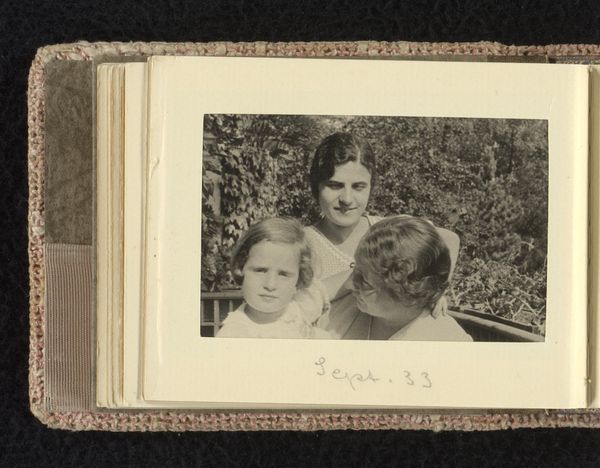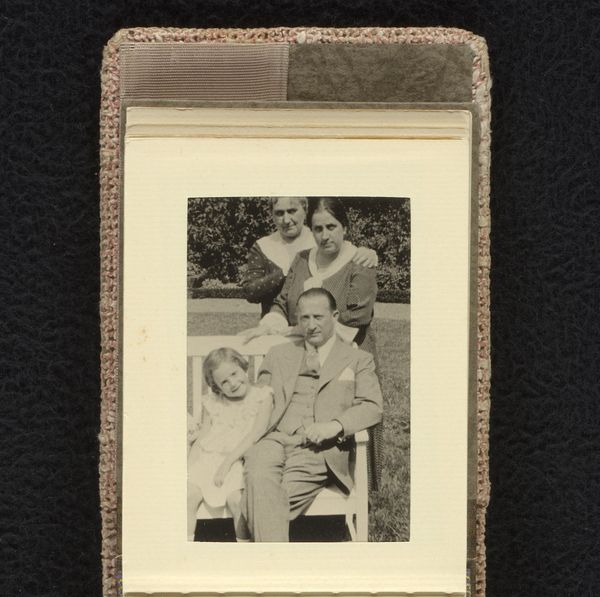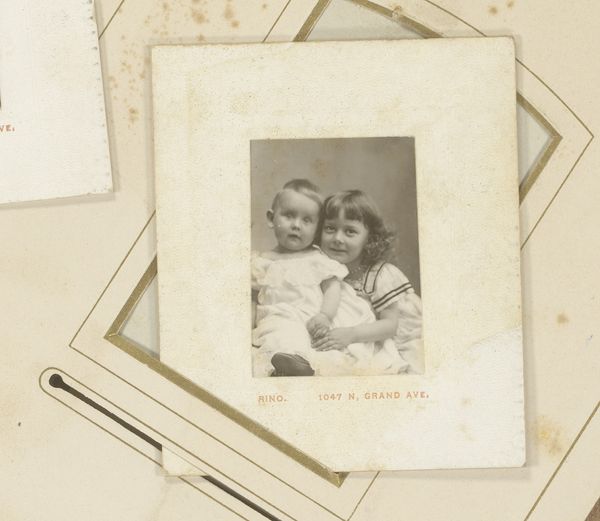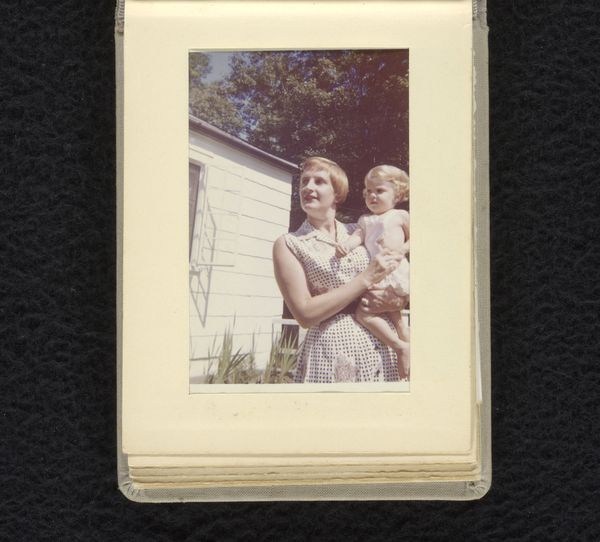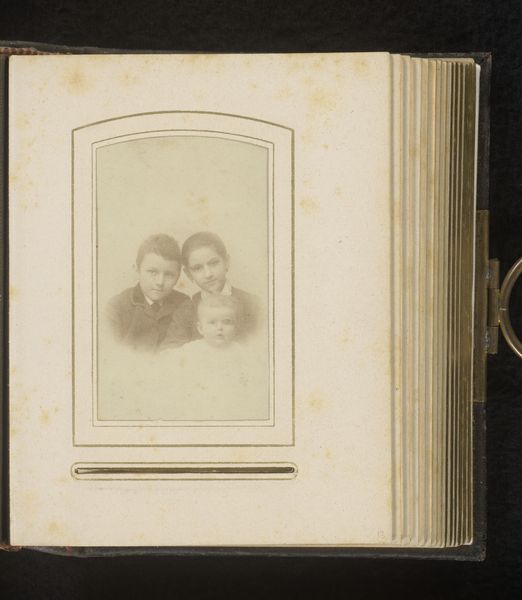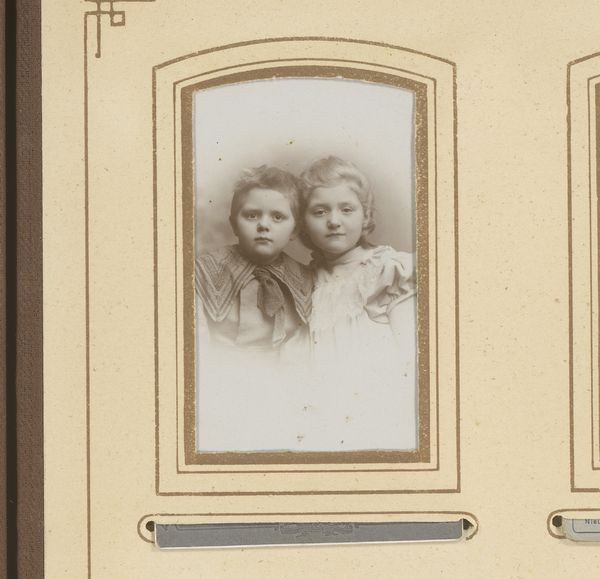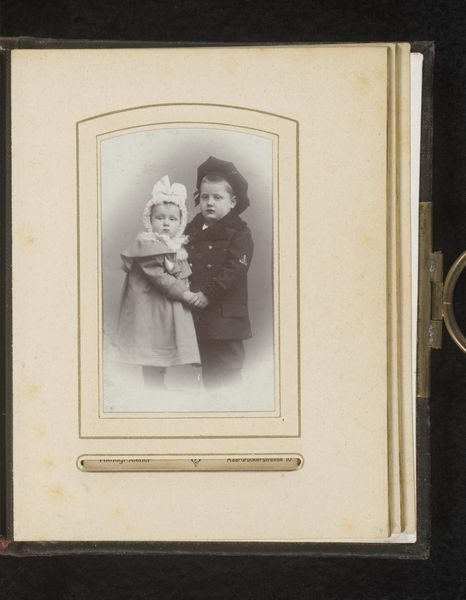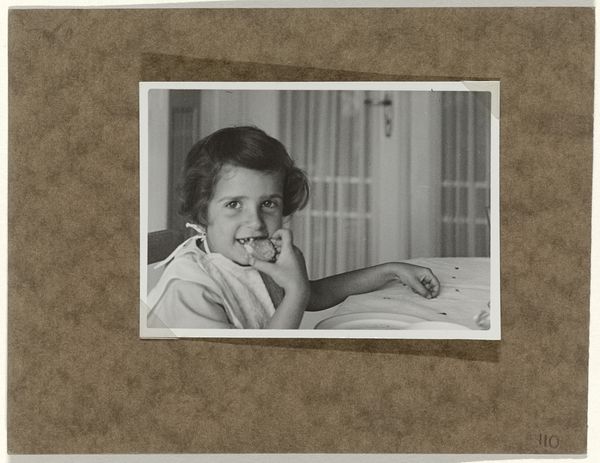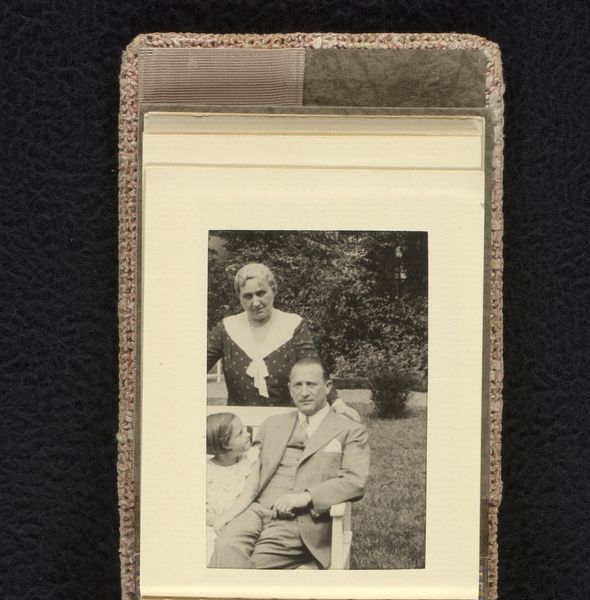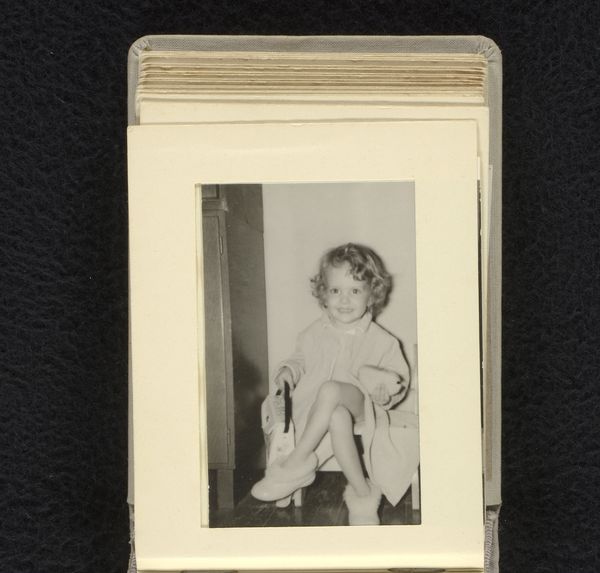
Isabel Wachenheimer met een onbekend meisje, 1970, Duitsland / Nederland / Verenigde Staten? 1970
0:00
0:00
paper, photography, gelatin-silver-print
#
portrait
#
aged paper
#
homemade paper
#
paper non-digital material
#
mother
#
paperlike
#
personal journal design
#
paper
#
photography
#
personal sketchbook
#
folded paper
#
gelatin-silver-print
#
letter paper
#
paper medium
#
design on paper
Dimensions: height 60 mm, width 88 mm, height 81 mm, width 107 mm
Copyright: Rijks Museum: Open Domain
Editor: Here we have a gelatin silver print titled “Isabel Wachenheimer met een onbekend meisje” from 1970. It’s…intimate. The photograph shows a woman and a young boy closely posed, both smiling. The snapshot aesthetic gives it a familiar feel, almost like looking through a family album. What strikes you when you look at this image? Curator: This image speaks volumes about connection, doesn’t it? We see not just two people, but a visual representation of the mother-child bond. Notice how they’re positioned - cheek to cheek, their smiles mirroring each other. This deliberate closeness isn't just for the camera; it reinforces the emotional link. And think about what gelatin silver prints represented at that time. It wasn't instant, digital gratification; there was a whole process involved, almost ritualistic in preserving a specific moment in time, lending further significance to the captured sentiment. Does the material alter how you see it? Editor: I think it adds to the sense of history. It feels less like a casual photograph and more like a conscious attempt to preserve a memory. What does it tell us about broader themes beyond this particular family unit? Curator: Consider the wider cultural landscape of the 1970s. This era witnessed evolving social dynamics and family structures. On one hand, traditional familial roles persisted. But the world also saw shifts towards more openness and exploration of emotional expression. How can you relate it to our time? Does it retain any relevance? Editor: I suppose that these sorts of intimate portraits are ubiquitous today in digital spaces, but there’s something so tactile about a physical print in an album, versus a file on a hard drive. The physicality connects us to a specific moment in time, in a way digital images sometimes fail to do. Curator: Exactly. The medium is indeed part of the message. It captures a sentiment and extends a feeling of nostalgia while acting as a document for times past. Editor: I now understand the importance of family bonds as a cultural anchor represented through tangible photographic memory. Thank you! Curator: Indeed, the layering of meaning found within seemingly simple portraits makes us see their true depth, and appreciate the symbolism inherent in all of the details.
Comments
No comments
Be the first to comment and join the conversation on the ultimate creative platform.
